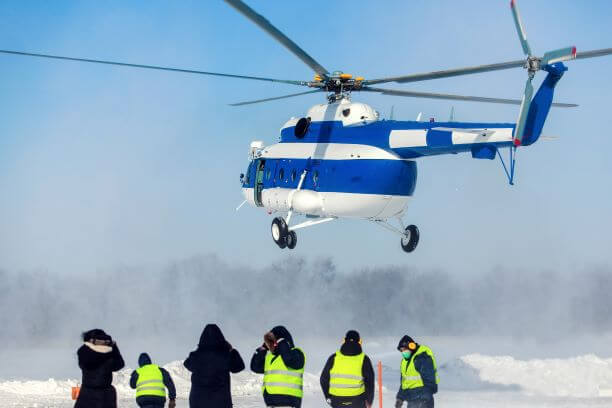There‘s no denying that the Covid-19 pandemic changed the aviation industry as a whole. According to IATA, in 2020 the aviation industry suffered a net loss of $118.5 billion. Aircraft were grounded, thousands of people found themselves unemployed, and the predictions for many areas of the aviation industry were bleak.
However, while many aviation companies had to make big cuts, postpone or abandon projects, some helicopter organizations did not see a drastic drop in operational demand. On a contrary, helicopter organizations related to the public sector even faced growth opportunities. And with high demand for helicopter services, mostly related to governmental Covid-19 operations, priority for highest quality MRO services was formed. However, in order to fulfill such demand, helicopter MRO services providers had to implement changes in their usual activities and offer flexible solutions.
Governmental helicopter operators with high growth momentum are continuously increasing their internal maintenance capabilities level and seeking independence from external factors. For such operators, the possibility of helicopter overhaul at their location becomes very attractive, as they can monitor and even participate in the overhauling activities of their own helicopters. During the Covid-19 crisis, the possibility of carrying out a helicopter overhaul at the customer base became even more attractive. “Even before the pandemic, operators were highly interested in an overhaul of helicopters at their bases. But now, pandemic brought additional issues, such as logistics and travel burden and related increased costs,” explained Gintaras Juknevicius, CEO of Helisota, Helicopter MRO provider. “Clients from all over the world turn to the companies that can provide overhaul services at their sites and do not require helicopter transportation to the MRO provider’s facility abroad. Only by observing the global situation and understanding clients’ needs, it is possible to offer solutions that they actually need.”
Health safety was another issue that Covid-19 brought to the frontline in all fields, helicopter operations included. Emergencies and patient transportation missions are usual fields of helicopter operations, however, for covid-19 related missions additional safety equipment had to be adapted and installed in helicopters to ensure secure conditions for patients as well as pilots and crewmembers. Due to a combination of reasons, such as adaptability, unmatched operational flexibility, and reliability, Mi series helicopters are most commonly used for operations with mission-specific equipment including covid-19 related missions. Aside from regular safety measures, helicopters designated for covid-19 patient transportation missions were upgraded and fitted with solid plastic chambers with integrated beds, air ventilation devices, and cabin-cockpit separation partition walls to protect pilots and personnel from infection.
Personnel training was also impacted by the global pandemic. With in-person training deemed unsafe, many pieces of training were adapted for online platforms. “Continuation of technical personnel training is incredibly important, especially when facing extreme situations,” said Helisota CEO Gintaras Juknevicius. “The service that needed the greatest adaptation to the current situation was maintenance personnel training. Due to travel restrictions, training organizations had to quickly reorient and deliver services remotely. Thus, after EASA approved the possible online execution of certain training, courses were transferred to the virtual space.”
Training, such as Refresh training, General Familiarisation training, are theoretical and do not require a practical exercise, therefore a certificate of completion of the course is issued after finishing the theoretical online training and passing the examination. However, training that requires a practical portion must be postponed to a time when it will be safe to conduct live training.
Covid-19 pushed helicopter MRO and training organisations to look for modern solutions. Changes, implemented during the time of crisis, provide not only safety but also flexibility and convenience for both MRO companies and their clients that will remain great selling points for the years to come.

